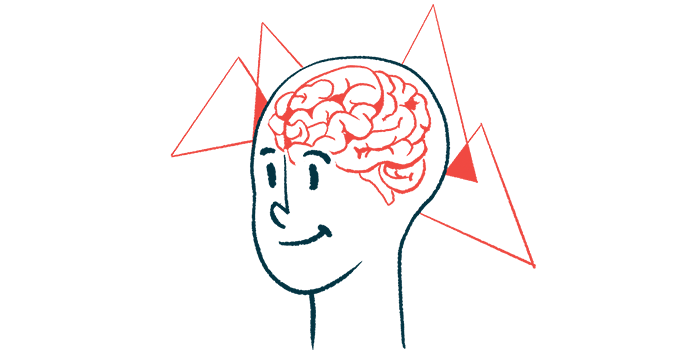Directional DBS the best option to improve gait, balance in Parkinson’s
Targeting central STN with electrical stimulation outperformed posterior STN
Written by |

Deep brain stimulation (DBS) directed at the central part of the subthalamic nucleus (STN), a brain region important for movement, was the best option to improve balance and gait, including freezing of gait, in Parkinson’s disease, a small clinical trial suggests.
Targeting the central STN with electrical stimulation outperformed the posterior, or back, STN, which is considered an ideal target to ease freezing and rigidity in Parkinson’s. Centrally directed DBS also worked better for posture control than classic nondirectional STN-DBS.
“Our findings raise the possibility of reprogramming STN-DBS toward the central area in selected patients with disabling [freezing of gait] and/or postural instability after surgery,” the researchers wrote.
The study, “Directional Subthalamic Deep Brain Stimulation Better Improves Gait and Balance Disorders in Parkinson’s Disease Patients: A Randomized Controlled Study,” was published in the Annals of Neurology.
DBS is a surgical procedure to help ease Parkinson’s motor symptoms such as rigidity, stiffness, slow movements (bradykinesia), and freezing of gait, particularly in the later disease stages when medications tend to be less effective. As part of the treatment, fine wires with electrodes are implanted in certain brain regions where they deliver mild electrical impulses, which are thought to interrupt the abnormal signaling patterns that contribute to motor symptoms.
About 1 in 3 patients show residual, or worsened, freezing of gait after DBS surgery, but it’s not clear what contributes to these complications.
DBS electrodes are commonly placed in brain regions involved in motor control, including the subthalamic nucleus (STN). Some studies suggest freezing of gait is best relieved when the central part of the STN is stimulated. But others indicate the posterior part is an ideal target for freezing and rigidity.
Comparing DBS on central, back STN regions
Here, researchers in France compared in a small clinical trial (NCT04223427) the impact of directional DBS, or dDBS, when the central or posterior STN is stimulated and non directional DBS, wherein the electrical stimulation radiates in a nontargeted spherical pattern.
The study enrolled 10 patients (eight men, two women) who underwent STN-DBS. At the study’s start, or baseline, all the patients had gait and balance problems, with disabling freezing of gait, and were responsive to standard levodopa treatment.
Electrodes were positioned within the STN and the researchers were able to adjust the electrical current to target the central and posterior STN areas with minimal or no overlap.
Nondirectional DBS was used for six months after the surgery to establish parameters based on a patient’s clinical examination. Then, patients underwent central and posterior dDBS in a randomized order, and stimulation was applied in an off-medication state (at least 12 hours after the last Parkinson’s medication). An off-DBS condition (one hour after switching off the stimulator) was also tested.
After the first assessment of central/posterior STN-DBS at the seventh month, all the patients received central stimulation and underwent reassessments the following month and at month 13.
Central STN-DBS significantly improved gait and balance control over posterior STN-DBS, an analysis showed. Posture control was worse with nondirectional STN-DBS than with central STN-dDBS.
During straight-ahead walking and turns, the probability of having at least one freezing of gait episode was significantly lower with central STN-DBS than with both posterior STN-dDBS and off-DBS. Step length also tended to be longer and turn duration was shorter with central over posterior STN-DBS. Nondirectional DBS was better at preventing gait freezing than posterior STN-DBS, but similar to central STN-DBS.
Significant improvements for all STN-DBS conditions over off-DBS were also observed as assessed by the Gait and Balance Scale (GABS) and MDS-UPDRS part 3, a standard assessment of motor function. Here, central STN-DBS was superior to posterior STN-DBS, but not to nondirectional STN-DBS.
Results of directional DBS over a longer period
During the six-month open-label phase of central STN-DBS, parameter settings were adjusted in response to new motor signs in eight patients. By 13 months, further improvements were seen in forward movements without a loss of postural control, either when moving (dynamic) or standing still (static). However, there were no significant changes in scores for GABS and MDS-UPDRS part 3 during this period.
No adverse events were reported during the randomized phase of the study, with five nonserious adverse events recorded in four patients during the follow-up period.
“We provide new evidence that central dDBS offers superior improvements in gait and postural disorders, with reduced [freezing of gait] episodes compared to dDBS oriented toward the posterior STN,” the researchers wrote. “Central STN-dDBS relative to nondirectional … STN-DBS yielded better postural control.”
“The advantages of central STN-dDBS were even more apparent when applied over a longer period during the open-label follow-up, showing superior improvements in forward performance, with efficient static and dynamic postural control, and a sustained clinical improvement in [freezing of gait] severity,” they wrote.






